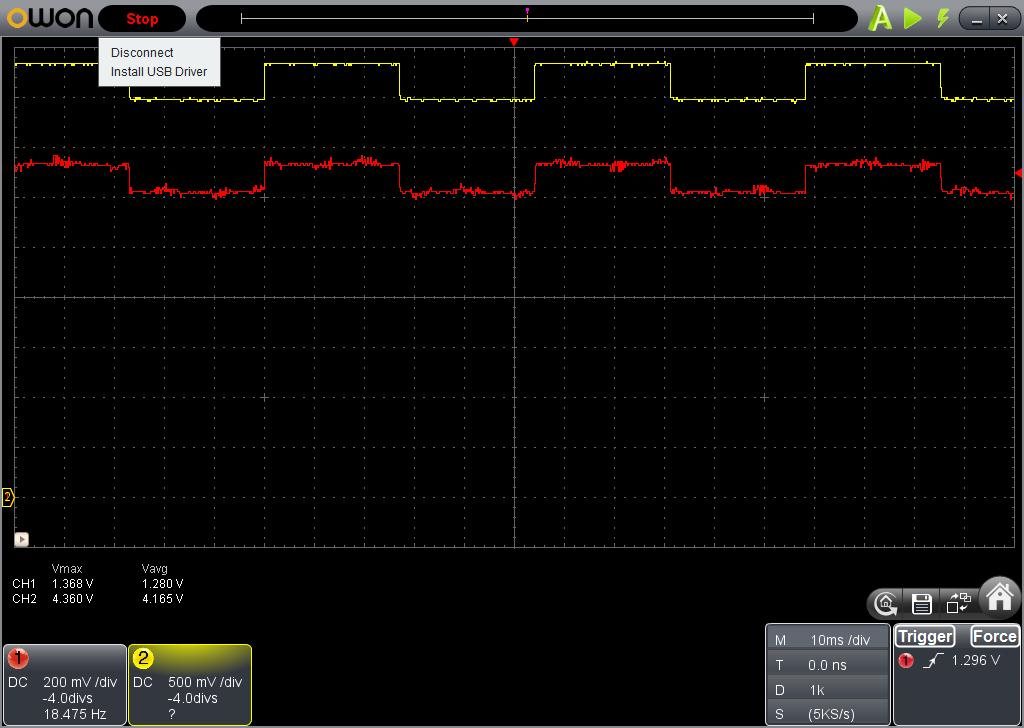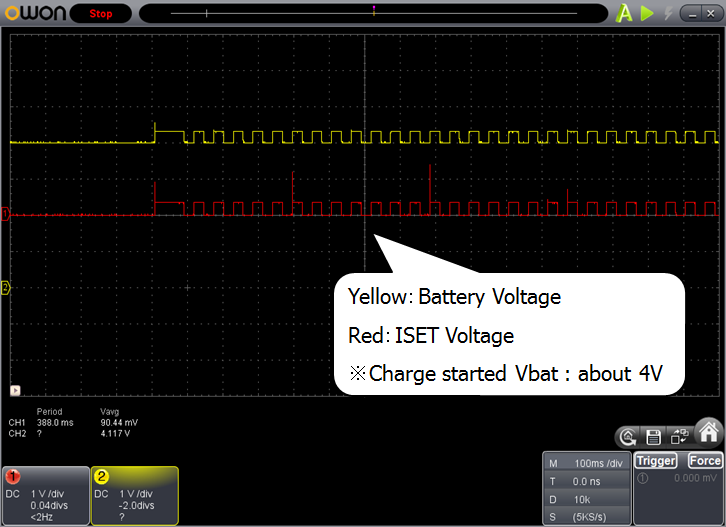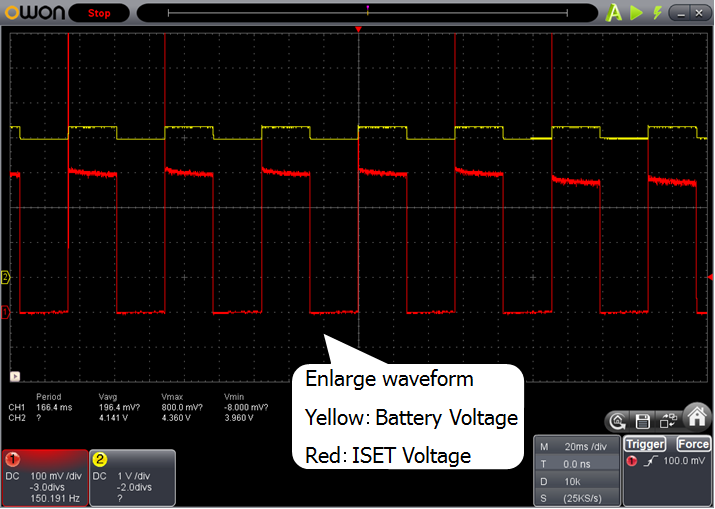A customer is estimating bq25100 by the following circuit.
When charging , the battery voltage is changing about 300 mV.
※Thermistor is same as datasheet recommendation(10-k NTC β = 3370).
Battery is 210mAh.
A waveform is the following.
※Yellow: The battery voltage
Red: DC after the resister divide.
I think a battery detecting routine, because the cycle of the change is 55ms.
When without a thermistor, it doesn't change(normally move) and steady voltage.
(TTDM mode?)
When there is a battery when is seen, Datasheet "8.4.6 Battery Detect Routine" writing that it'll be this routine at all except for TTDM.
But moving that a thermistor is connected state.
Please let me know the way to make it normal movement in the state with a thermistor.
Best regards,
Satoshi





